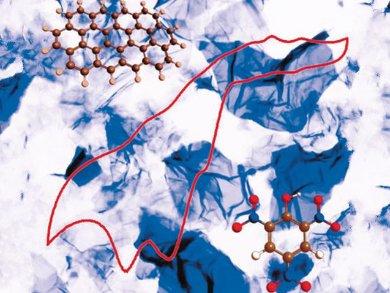Doped graphenes are often used in electrocatalysis and electrochemical sensing. While their electrocatalytic properties are often attributed to dopants, such as nitrogen or boron, graphene derivatives unintentionally contaminated with metals during preparation are also known to exhibit such activity. A common contaminant is manganese, caused by the use of permanganate during the preparation of the material.
Zdeněk Sofer and colleagues, University of Chemistry and Technology, Prague, Czech Republic, have investigated the difference in electrocatalytic activities between hydrogenated graphenes prepared in the presence and absence of Mn. The so-called Hummers method to synthesize graphene oxide (GO) uses KMnO4 and results in GO that is contaminated by Mn, which remains in the material after hydrogenation or reduction of the graphene.
Hydrogenated graphene from Hummers GO exhibited significantly higher electrocatalytic activity for the oxygen reduction reaction than graphene prepared in the absence of Mn. The researchers used X-ray fluorescence (XRF) to characterize the metallic impurities and to confirm the presence of manganese. According to the researchers, the catalytic activity of manganese oxides for the tested reactions is well known. Thus, the Mn impurities are probably the cause of the graphene’s improved activity.
- Partially Hydrogenated Graphene Materials Exhibit High Electrocatalytic Activities Related to Unintentional Doping with Metallic Impurities,
Ondřej Jankovský, Alena Libánská, Daniel Bouša, David Sedmidubský, Stanislava Matějková, Zdeněk Sofer,
Chem. Eur. J. 2016.
DOI: 10.1002/chem.201600811




